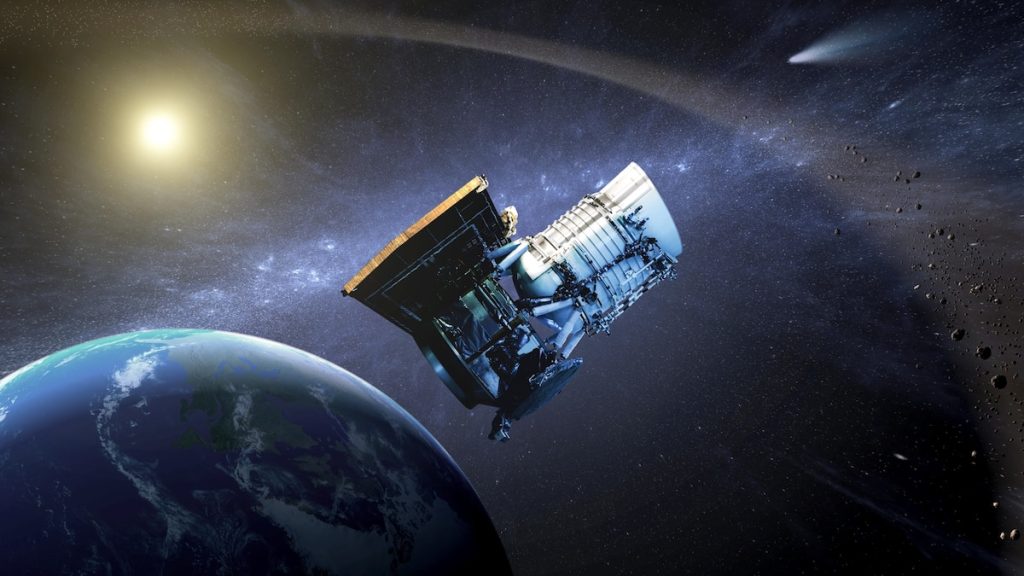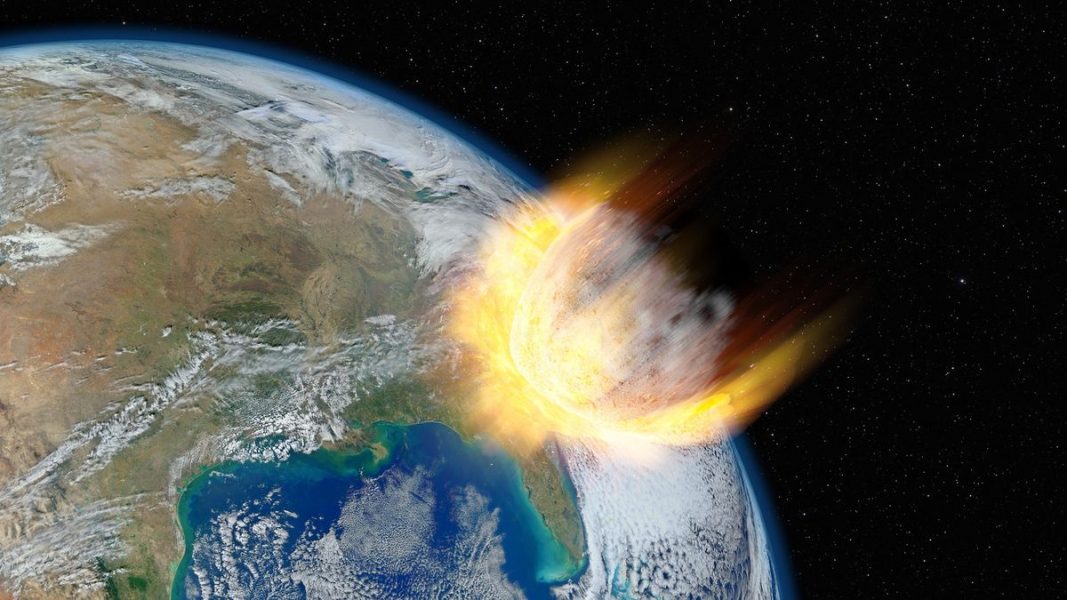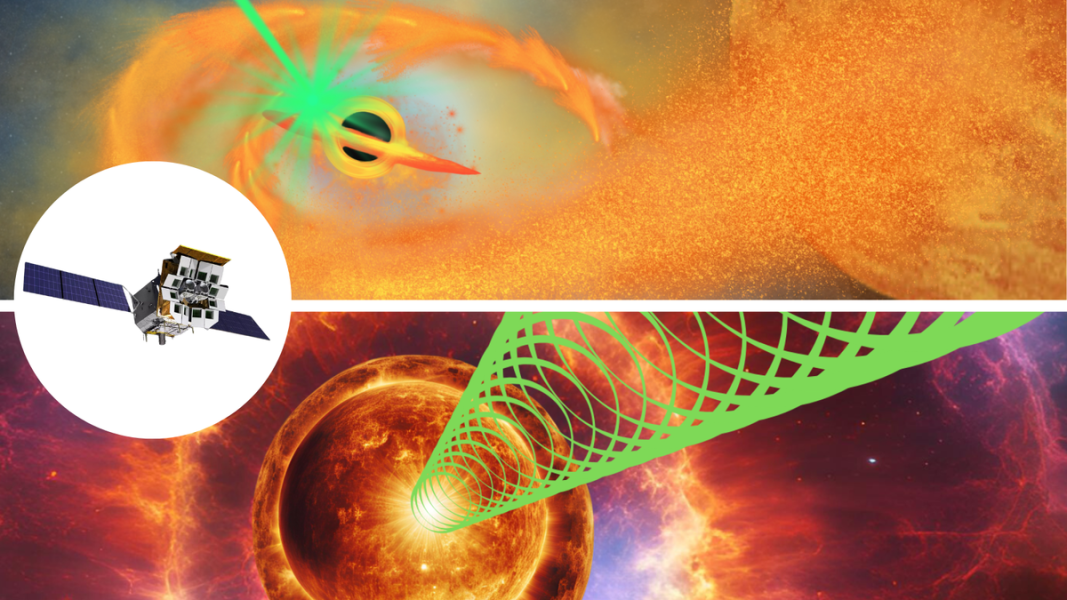This asteroid may hit Earth in 2032. Don’t panic—scientists have a plan. – National Geographic

Space agencies have systems in place to spot, track, and forecast the future orbits of potentially hazardous asteroids.Asteroids fly by Earth on a regular basis, and most of them are of no concern whatsoever. But sometimes a space rock gets flagged as a potential threat because there is a slim chance that it may collide with Earth. A newly discovered near-Earth asteroid called 2024 YR4 is one possibly perilous object: It’s a 130 to 300-foot long rock that currently stands a 1 in 53 chance of impacting somewhere on Earth on December 22, 2032.To be clear, there is no need to hurriedly invest in a hardened bunker. This asteroid is certainly worth watching because it could devastate a city with a direct hit—even on the small side of its size estimate. But as astronomers gather more data on the future orbit of 2024 YR4, the odds of a violent rendezvous with Earth will, most likely, drop precipitously to zero.The detection shows that the system for defending Earth from lethal space rocks works like a well-oiled global machine. Observatories all over the world contribute to finding near-Earth objects. And both NASA and the European Space Agency (ESA) have developed automated software programs that can, with extreme precision, track every single potentially hazardous asteroid and comet found to date.One of the key tenets of planetary defense is to find Earthbound asteroids before they find us. Here’s how NASA, ESA and their colleagues pull it off.Any telescope on the planet can contribute to planetary defense: If an astronomer anywhere on Earth spies an object that looks like an asteroid (or comet), they can report its findings to the planetary defense community. But it’s worth noting that NASA has a network of telescopes around the world dedicated to hunting down undiscovered asteroids and comets. A telescope in Chile—part of one such NASA-funded facility, the Asteroid Terrestrial-impact Last Alert System (ATLAS)—discovered 2024 YR4, on December 27 last year.Once an observatory first spots a previously undiscovered asteroid, astronomers report the find to the Minor Planet Center in Cambridge, Massachusetts, a sort of public notice board for astronomers to peruse. Then, interested astronomers can use those initial observations to track it with their own telescopes.When a new object is discovered, NASA and ESA’s asteroid and comet-tracking groups jump into action. NASA has the Center for Near Earth Object Studies (CNEOS), while ESA has the Near-Earth Object Coordination Centre (NEOCC). As both essentially do the same thing, let’s focus on CNEOS. Initially, an automated computer program named Scout uses the available crop of observations to plot out the object’s likely future orbits. With just a few data points to go on at first, these orbit forecasts have a high level of uncertainty, but Scout’s job is to calculate if there is any chance whatsoever that this object may impact Earth within the next month or so. Scout does this math before the object is even confirmed to be an asteroid, rather than an observation error or something artificial like a satellite. It’s designed to be a very early-warning system that may give a country in harm’s way a chance to defend itself or evacuate its imperiled people.If the object doesn’t pose an immediate impact risk, and it’s a real asteroid, NASA’s Sentry program takes the reins. This automated software calculates if there is a chance, high or low, that the asteroid could impact the planet within the next century, using every new observation of the asteroid to continually update its predictions.Sentry uses the gravitational pulls of the Sun and the solar system’s planets to work out the possible future orbits of an asteroid. It can also determine how a force called the Yarkovsky effect can gradually change an asteroid’s motion, changing its long-term orbit.Asteroids often rotate, with their sunward side getting warmed up before spinning out of view. In the shade, they remit this heat, which acts like a miniature thruster, gently shifting the asteroid’s position in space. In the past, astronomers had to take this into account with manual calculations. Sentry’s latest version is smart enough to make those calculations itself.“Thanks to the Sentry results, we can make sure observers track the asteroids that could pose a risk,” says Davide Farnocchia, a navigation engineer at CNEOS in California. And until an asteroid poses an essentially zero chance of impacting Earth, it remains on the Sentry Risk List.Right now, 2024 YR4 is at the top of that list. Astronomers don’t yet know enough about this particular asteroid to determine whether it will definitely miss the planet. That’s partly because this planetary defense system does have an element of luck to it—and partly because the system is still a work-in-progress.Asteroids are most easily spotted closest to Earth, when they are reflecting enough sunlight to appear as a bright speck. 2024 YR4 was identified just two days after its closest approach to Earth. “The object was found when it passed by Earth and started getting away from it,” says Juan Luis Cano, an aerospace engineer with ESA’s planetary defense program. It got very faint very quickly, so most ground-based telescopes struggled to track it. That means that some possible orbits have been ruled out, but several possibilities remain—and a very small number of them put the asteroid on a collision course with Earth.A key issue with reflected sunlight is that it only gives a range of sizes. A larger asteroid with a dark, coal-like surface reflects a similar amount of light to a smaller rock with a shiny, chalk-like surface. Without knowing what 2024 YR4’s surface looks like, astronomers cannot tell if it’s a shiny 130-foot asteroid or a dull 300-foot asteroid with far greater destructive capabilities. Scientists can improve their understanding of 2024 YR4 in several ways. The first is to gather more observations on this pass. Although the asteroid is rapidly disappearing, larger telescopes will be able to see it until early April.Additionally, “2024 YR4 will make another close approach with Earth in 2028, at about 20 times the distance between the Earth and the Moon,” says Farnocchia. “Adding two months of tracking will greatly improve the knowledge of its future position in 2032, and it is likely that an impact in 2032 will be ruled out by the end of this observing window.”“Even better would be finding a ‘precovery’, where someone unknowingly observed it years ago,” says Andy Rivkin, an astronomer at Johns Hopkins Applied Physics Laboratory in Maryland. Astronomers could have accidentally snapped a photo of 2024 YR4 moving across the sky without realizing. If, say, those images dated back a few years, then “we’d suddenly have years’ worth of data instead of weeks or months,” which Rivkin notes would greatly help narrow down the asteroid’s orbital path.Finally, if an asteroid zips by especially close to Earth, a small number of observatories can ping the object with radar. This would provide a highly precise measure of an asteroid’s size and trajectory—but even in 2028, during 2024 YR4’s next Earth flyby, it may prove too evasive. “At that distance and for the size of this asteroid, it is not guaranteed that radar would detect it,” says Farnocchia. Infrared astronomy could refine such observations even further. In infrared light, asteroid sizes become clear; a larger asteroid, no matter how reflective or dull its surface is, always glows brighter in infrared than a smaller asteroid, meaning this can be used to accurately calculate an asteroid’s dimensions.NASA’s Near-Earth Object Surveyor—an infrared, space-based observatory solely dedicated to hunting asteroids—will be launched in the next few years, to the excitement of many planetary defenders.In the meantime, researchers have found that the special infrared filters on the multipurpose James Webb Space Telescope (JWST) can also be used to find small asteroids and precisely determine their size. With optical light telescopes starting to struggle as 2024 YR4 fades from view, “it seems like JWST would be a fantastic fit,” says Cristina Thomas, an astronomer and planetary defense researcher at Northern Arizona University.“Asteroids get much brighter in the infrared than in the visible as they move away from Earth, and they are thus easier to detect or track with infrared facilities—JWST being the biggest of all,” says Julien de Wit, a planetary scientist at the Massachusetts Institute of Technology. Astronomers—including Rivkin, Farnocchia, Thomas, and de Wit—quickly put forward a proposal requesting JWST’s use to refine the size of 2024 YR4 and help ensure its monitoring. On February 5, they received a green light, and now, the most expensive space observatory in will soon be used for planetary defense purposes. The notion that there is even the slightest chance that 2024 YR4 may endanger us may create some anxiety. But thanks to the planetary defenders at NASA, ESA and beyond, the world has never been safer from dangerous asteroids—and with continued investment in their staff and technology, all eight billion of us will remain protected for generations to come.Copyright © 1996-2015 National Geographic SocietyCopyright © 2015-2025 National Geographic Partners, LLC. All rights reserved
Source: https://www.nationalgeographic.com/science/article/asteroid-2024-yr4-earth-impact-chance-2032






